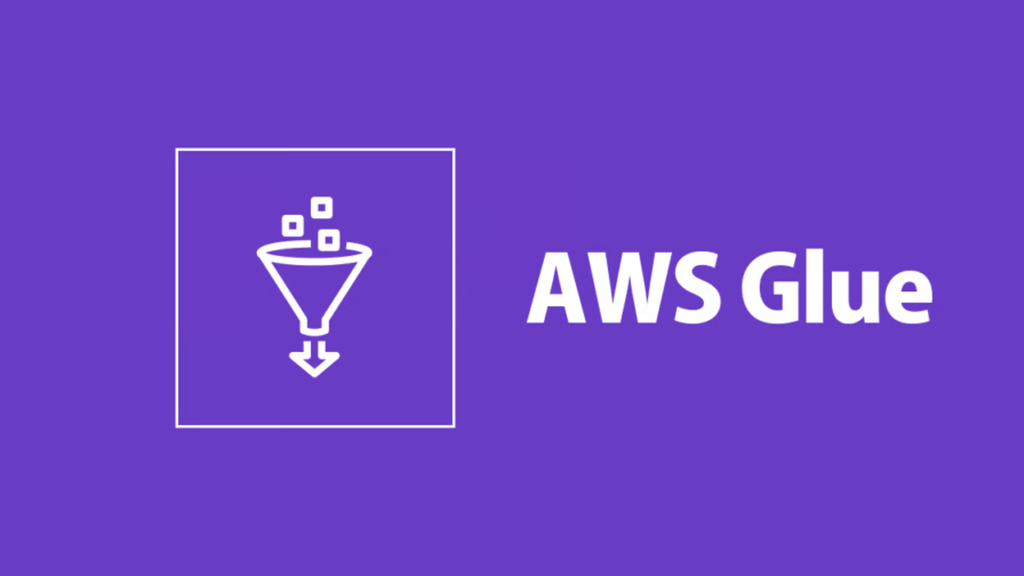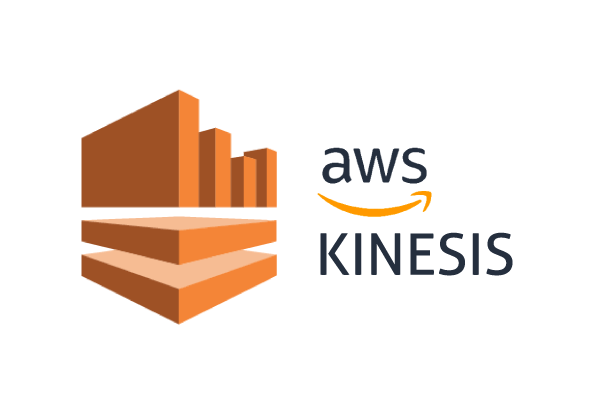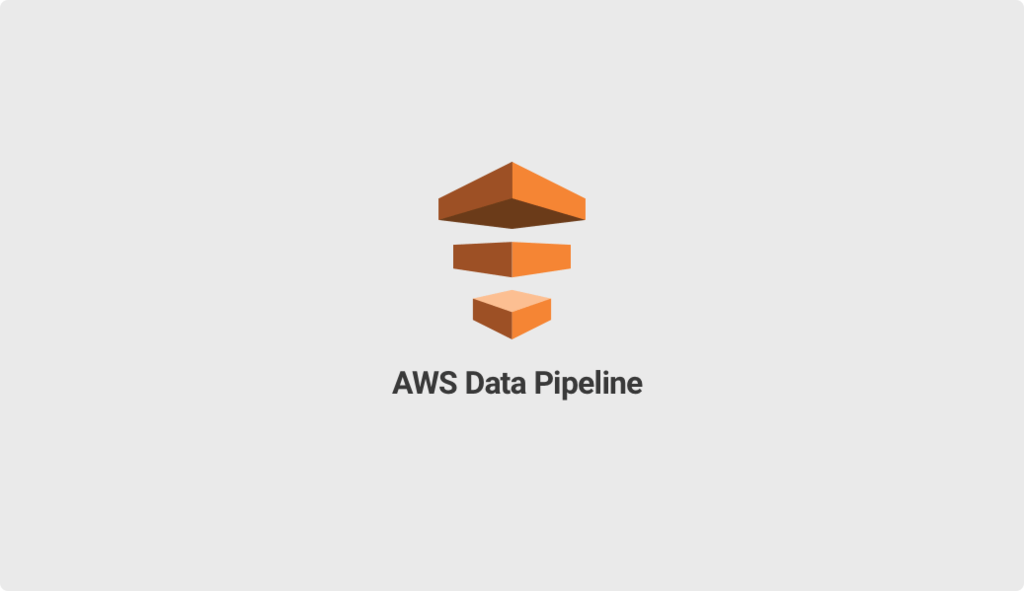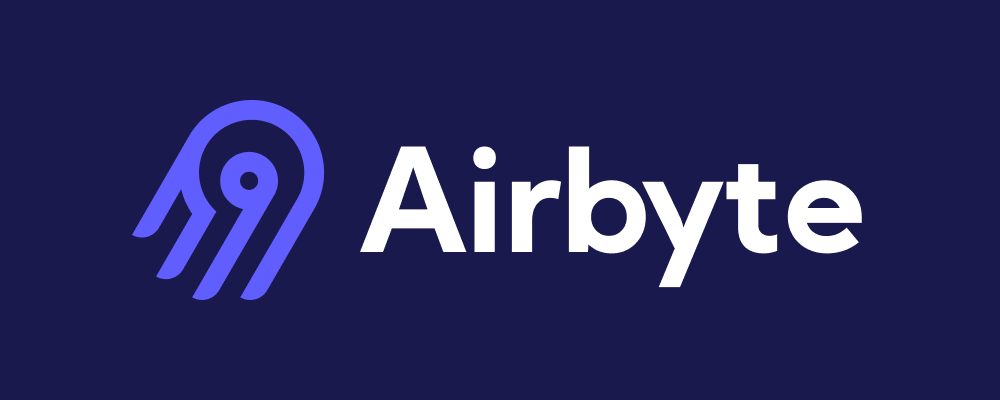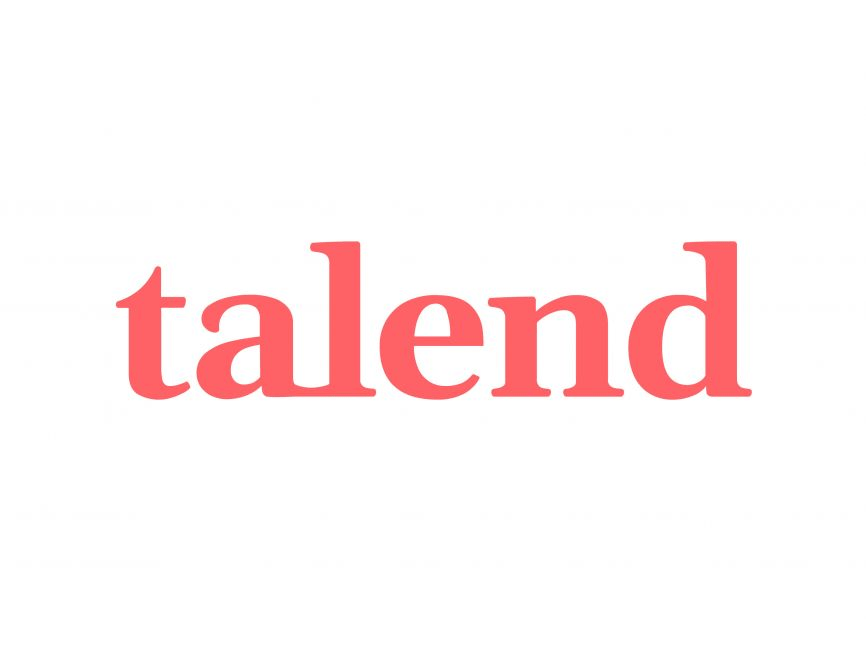
Businesses today must make fast, informed decisions to stay competitive and achieve their goals. However, managing vast amounts of data to derive actionable insights is often a complex and resource-intensive task.
ETL (Extract, Transform, Load) tools streamline the process of collecting, organizing, and preparing data from various sources for analysis. These tools simplify data workflows, ensuring accuracy and consistency, which in turn empowers businesses to make better, data-driven decisions.
AWS offers a wide range of ETL tools that help you extract data from diverse sources, transform it to fit analytical requirements, and load it into an AWS data warehouse for analysis. However, with so many options available, selecting the right tool can be overwhelming.
This guide will highlight the top AWS ETL tools of 2024, breaking down their key features and use cases, so you can make an informed decision based on your specific business needs.
What are AWS ETL Tools?
Amazon Web Services (AWS) provides a suite of ETL tools designed to help businesses consolidate, integrate, and manage their data more effectively. These tools focus on three essential operations:
- Extract: Get the data from various sources such as databases, APIs, or flat files.
- Transform: Modify the data (clean, aggregate, model, etc.) into a standardized format for analysis or future transformations.
- Load: Load the transformed data into a new destination, independent from the raw data sources (typically a data warehouse, database, or data lake).
ETL tools in the AWS ecosystem are particularly useful for handling large volumes of data and ensuring it's processed consistently and in a timely manner for reporting or advanced analytics.
Top AWS ETL Tools
Here are the top four ETL tools in AWS that help streamline your business processes and enhance data management capabilities.
1. AWS Glue
AWS Glue is a fully managed ETL (Extract, Transform, Load) service provided by Amazon Web Services (AWS). It simplifies large-scale data processing by automating data discovery, cataloging, cleaning, and transformation workflows, thereby reducing the time and effort required for data preparation and integration. Glue is particularly effective for organizations seeking to build scalable data pipelines for analysis or business intelligence purposes.
Key Features of AWS Glue
- Serverless Environment: AWS Glue provides a fully serverless architecture, which means that the underlying infrastructure for ETL jobs is automatically provisioned and scaled based on the workload. This eliminates the need for manual management of infrastructure resources, which lets data engineers and data analysts focus on core business initiatives rather than maintaining and managing servers.
- Data Catalog: AWS Glue includes a built-in Data Catalog, which serves as a centralized metadata repository for storing and managing the schemas of your data assets. The Glue Data Catalog automatically crawls your data sources, infers schemas, and populates the catalog, making it easy for engineers and analysts alike to search and discover datasets.
- Pre-Built and Custom Transformations: AWS Glue offers a comprehensive library of pre-built transformations for common data preparation tasks such as filtering, aggregation, deduplication, and joins. These built-in transformations simplify the ETL process by providing ready-made functions that can be easily applied to datasets. In addition, AWS Glue allows you to write custom transformations using Python, Scala, or SQL scripts, enabling more complex and tailored data processing workflows.
- AWS Glue DataBrew: Glue DataBrew is a no-code visual data preparation tool that allows users to clean and transform data interactively without needing to write code. With DataBrew, you can perform tasks such as data profiling, normalization, and visualizing data lineage through a user-friendly interface, making interacting with data pipelines easy for less technical users.
Use Cases
AWS Glue is highly versatile and supports various ETL frameworks, including both ETL and ELT (Extract, Load, Transform) processes. It is suitable for:
- Batch processing of large datasets
- Integrations between data lakes and data warehouses, providing easy integration with Amazon S3, Amazon Redshift, Amazon Athena, and other AWS services.
Drawbacks
- Complex Pricing Model: AWS Glue pricing is based on Data Processing Units (DPUs), which can make it difficult to predict costs, especially for large-scale jobs with variable processing times.
- Lack of Real-Time Processing: Glue jobs can have a significant cold-start time, particularly for serverless Spark jobs. This latency can be problematic for workflows requiring near-real-time data processing.
- Limited Support for Non-AWS Data Sources: While Glue integrates well with other AWS services, it might not offer seamless or optimized connectivity with non-AWS data sources compared to other ETL tools.
2. AWS Lambda
AWS Lambda is a fully-managed, serverless computing service that allows you to run code in response to various events without the need for provisioning or managing servers. This makes Lambda particularly useful for real-time data processing and highly scalable workloads.
Key Features of AWS Lambda
- Serverless Architecture: AWS Lambda is serverless, automatically provisioning, scaling, and managing infrastructure to run code triggered by events like S3 changes, DynamoDB updates, or API Gateway requests. It scales dynamically based on demand, ensuring cost-efficiency and performance without manual intervention.
- Integration with AWS Services: Lambda integrates with services like S3, DynamoDB, and Kinesis to run custom logic in response to events, enabling real-time data processing and transformation. For example, it can perform ETL operations on Kinesis streams before sending the data to Redshift.
- Multi-Language Support: Lambda supports multiple languages, including Python, Java, Node.js, and more. Custom runtimes can be created using the AWS Lambda Runtime API, offering developers the flexibility to use their preferred languages.
- Function Versioning: Lambda allows function versioning, letting you create and manage multiple function versions. This makes it easier to test updates and rollback changes without impacting live applications.
Use Cases
- Reactive Data Pipelines: AWS Lambda is highly effective for transforming data streams in response to events before loading them into storage systems like Amazon DynamoDB or Amazon Redshift. For example, you can use Lambda to preprocess streaming data from Amazon Kinesis by cleaning, filtering, or enriching the data as it reacts to incoming events throughout the pipeline.
- Automated Task Scheduling and Orchestration: Lambda, in conjunction with Amazon CloudWatch Events, can automate a wide range of tasks, such as batch processing, report generation, and periodic data clean-up. For instance, you can schedule Lambda functions to run daily to archive old data, generate business reports, or trigger ETL pipelines.
Drawbacks
- Cold Start Latency: AWS Lambda can experience delays when a function is invoked after a period of inactivity due to the "cold start," which can introduce latency, particularly in low-latency or real-time applications.
- Execution Time Limit: Lambda functions have a maximum execution time of 15 minutes, making them unsuitable for long-running tasks or complex workflows that require extended processing times.
3. AWS Kinesis
Amazon Kinesis is a fully managed service that enables real-time processing of streaming data at any scale. Kinesis is ideal for applications that require continuous data ingestion and real-time analysis, such as log and event data monitoring, IoT data processing, and media streaming.
Components of AWS Kinesis
- Kinesis Data Streams: Allows you to capture, store, and process streaming data in real time. It can ingest massive volumes of data from sources like web applications, financial transactions, or IoT devices. You can process this data in real-time using consumer applications such as AWS Lambda, Apache Spark, or other streaming analytics platforms.
- Kinesis Video Streams: Designed for securely streaming and processing live video data from devices like security cameras, mobile devices, and IoT sensors. It is useful for building applications that require real-time video analysis, such as video analytics for surveillance, video conferencing, or smart home applications.
- Kinesis Data Firehose: A fully managed service for delivering streaming data to other AWS services, such as Amazon S3, Amazon Redshift, and Amazon Elasticsearch Service. It can automatically scale to match the throughput of incoming data, and it can batch, compress, and encrypt the data before delivering it to the specified destination.
Key Features of AWS Kinesis
- Scalability: Kinesis automatically scales to handle large volumes of streaming data, adapting to high throughput without manual intervention. This makes it ideal for applications with fluctuating data rates, such as mobile apps or IoT devices.
- Real-Time Analytics: Kinesis Data Analytics allows real-time analysis of streaming data using standard SQL queries, enabling immediate insights and data-driven decisions without complex code. It integrates with AWS services like Lambda and Redshift for more complex analytics workflows.
- Enhanced Fan-Out: Kinesis Data Streams' Enhanced Fan-Out enables multiple consumer applications to process the same stream concurrently, each with its own dedicated read throughput, improving efficiency and reducing latency.
Use Cases
- High-Throughput, Real-Time Data Streaming: Kinesis is ideal for applications requiring continuous, real-time ingestion and processing of large volumes of streaming data, such as log aggregation, clickstream data from websites, or IoT sensor data, where low-latency processing is crucial.
- Multiple Concurrent Consumers: Kinesis is better suited for scenarios where multiple applications need to consume and process the same stream simultaneously (e.g., analytics, monitoring, and alerting systems) due to its Enhanced Fan-Out feature, offering dedicated throughput for each consumer.
Drawbacks
- Pricing Complexity: Kinesis pricing can be difficult to predict due to charges based on shard hours, PUT payload units, data retention, and data transfer, which can lead to unexpected costs, especially for high-throughput applications.
- Shard Management Overhead: While Kinesis scales automatically, managing shards (the basic unit of capacity) manually can be complex, requiring careful tuning to avoid bottlenecks or over-provisioning for consistent performance.
- Limited Data Retention: By default, Kinesis Data Streams retain data for only 24 hours (extendable to 7 days), which may not be sufficient for applications requiring longer retention without additional storage solutions.
4. AWS Data Pipeline
Note: As of July 25th, 2024, AWS Data Pipeline is no longer available to new users. Existing users can continue to use the platform and should be considering a migration. If you’re a current AWS Data Pipeline user, continue through this article to learn about alternatives and how they compare to AWS Data Pipeline.
AWS Data Pipeline is a web service that automates the movement and transformation of data across various AWS services and on-premises data sources. It enables you to create, schedule, and manage complex data workflows, ensuring that data is efficiently processed, integrated, and moved between different locations.
Key Features of AWS Data Pipeline
- Visual Interface: AWS Data Pipeline provides a visual drag-and-drop interface that simplifies the creation of data workflows. Using the Pipeline Designer, you can easily configure data sources, transformations, and destinations on a visual canvas. This interface allows users to define the flow of data between different services such as Amazon S3, Amazon RDS, DynamoDB, and on-premise systems.
- Customizable Alerts: To enhance workflow monitoring, AWS Data Pipeline offers customizable notifications and alerts. These notifications can be triggered based on specific events, such as successful completion, failures, or delays in the pipeline execution. Alerts can be integrated with Amazon SNS (Simple Notification Service) to send real-time notifications via email, SMS, or other channels, enabling you to react immediately when events occur in your data workflow.
- Security: AWS Data Pipeline integrates with AWS Identity and Access Management (IAM) to define granular access controls over your data workflows. It supports data encryption both at rest and in transit, ensuring that sensitive data is protected throughout the pipeline. You can also assign IAM roles to pipelines, allowing them to access necessary AWS services securely without exposing long-term credentials.
Use Cases
AWS Data Pipeline is an effective tool for orchestrating data movement between different AWS services and external systems. It supports a wide range of data integration tasks, such as:
- On-Premises Data Integration: AWS Data Pipeline supports seamless integration with on-premises data sources and services, making it ideal for hybrid environments where data resides outside of AWS.
- Complex Scheduling and Orchestration: If you need more advanced scheduling options or dependency management between tasks, Data Pipeline offers more flexibility for custom workflows and coordinating different data sources
- Custom or Non-Spark Workflows: If you need to run non-Spark jobs or custom scripts across different environments, Data Pipeline is better suited as Glue focuses on serverless Spark ETL jobs.
Drawbacks
- Manual Resource Management: AWS Data Pipeline often requires users to provision and manage underlying resources, like EC2 instances or EMR clusters, which adds complexity and can lead to higher operational overhead compared to fully serverless solutions.
- Limited Scalability and Flexibility: Compared to newer tools like AWS Glue, Data Pipeline doesn't scale as easily for large-scale data processing or provide as much flexibility for handling complex data transformations.
- Outdated Interface and Less Automation: The user interface is less intuitive, and it lacks some automation features found in modern data orchestration tools, which can make creating and managing data workflows more cumbersome.
Drawbacks of Native AWS ETL Tools
While AWS ETL tools offer powerful capabilities, they also come with some limitations that businesses should consider when choosing an ETL platform.
- Limited Source Connectors: AWS provides a wide array of pre-built connectors to integrate with various services, but these may not cover every potential use case. For more specialized integrations, organizations may need to invest in additional development work, which can complicate workflows and increase costs. This is particularly relevant for integrating data from non-AWS platforms or legacy systems.
- Vendor Lock-In: Relying heavily on AWS services for ETL pipelines can create a strong dependency on their ecosystem, making it difficult to migrate or integrate with non-AWS platforms down the road. Over time, switching to alternate providers can become very costly and complex, reducing your freedom to choose the best tools for your evolving business needs.
- Steep Learning Curve: Services like AWS Glue, AWS Kinesis, and AWS Lambda offer advanced features, but their complexity can present a steep learning curve, particularly for new users or teams unfamiliar with the AWS ecosystem. Mastery of these tools (and cost estimation for them!) often requires significant training and a deep understanding of AWS's broader architecture, making it more challenging for businesses without prior AWS experience to effectively implement these tools.
- Cost Estimation Challenges: AWS ETL tools have complex pricing models that make it difficult for organizations to accurately predict expenses. The multitude of variables—such as data processing units, storage tiers, data transfer costs, and varying rates for different services and regions—can lead to unforeseen charges. This complexity hampers effective budgeting and financial planning, as estimating the total cost of ownership becomes a challenging task, especially when scaling operations or dealing with fluctuating workloads.
Top 6 ETL Tools to Integrate Data in AWS
Choosing the right tool integrated with the AWS ecosystem that perfectly aligns with your business requirements can be a complex and overwhelming process, especially given the extensive range of options available on the market. The decision you make will significantly impact your data management efficiency, scalability, and overall operational success.
To assist you in navigating this intricate landscape and to empower you to make an informed choice, we have compiled a comprehensive list of alternatives to AWS ETL tools designed for managing and integrating your data both within and across ecosystems.
1. Estuary Flow: A Top Choice
Estuary Flow is a robust ETL (Extract, Transform, Load) data integration platform that simplifies data movement between various sources and destinations. It stands out for its real-time data processing capabilities and extensive library of pre-built connectors.
Key Features of Estuary Flow
- Hundreds of Built-in Connectors: Estuary Flow includes both source and destination connectors for the primary AWS data stores, such as Amazon S3, Redshift, DynamoDB, Kinesis, DocumentDB, and Amazon SQS. These no-code connectors allow you to build data transfers effortlessly to and from your AWS environment.
- Data Transformation: Estuary Flow allows you to normalize, clean, and transform data before loading it into AWS services, ensuring data is ready for analysis. You can write transforms with the familiarity of SQL, or for more complex tasks you can use TypeScript for more expressive transforms.
- Change Data Capture (CDC): Estuary Flow supports Change Data Capture, enabling you to replicate the source data changes in real-time in your destination. This feature ensures that all your data stores are always up-to-date with each other.
- Schema Evolution: Estuary Flow offers automated schema evolution within its web application. It helps you detect potential disruptions in data flow components during edits.
- Private Deployments: Estuary Flow allows customers on the Enterprise Tier to deploy data infrastructure entirely within their own private cloud environments, ensuring complete control over data pathways and compliance with strict security requirements. This offers a secure alternative to AWS options like Lambda and Glue by keeping sensitive data within your private networks.
Get started with Estuary Flow for real-time data integration. Register now or join our Slack community for support!
2. Informatica
Informatica is a powerful ETL data integration tool that enables efficient and scalable handling of complex data management tasks. It is known for its comprehensive features, which simplify data extraction, transformation, and loading processes.
Key Features of Informatica
- Scalability: Informatica efficiently scales your data throughput to accommodate large data volumes, seamlessly adapting to growing business needs.
- Data Integration: The tool supports a wide range of data sources and destinations, including AWS services, enabling seamless integration with different platforms.
- Security: The platform offers robust security measures such as user authentication and privacy management to ensure secure data transfers.
For a more in-depth comparison, explore how Informatica compares to other tools in our detailed reviews of Informatica vs. Airbyte and Informatica vs. Fivetran.
3. Matillion
Matillion is a flexible cloud-based ETL tool that enables you to organize data before using it for analysis.
The platform offers robust data integration and transformation capabilities, offering an intuitive interface with pre-built connectors. These features help simplify complex data transfer tasks, facilitating the preparation of data for business operations.
Key Features of Matillion
- Flex Connectors: Matillion offers Flex Connectors, which are custom-developed by the Matillion team based on customer requests. These connectors are not typically available in the standard library. However, they are delivered to customers by the Matillion team in a few days.
- Cloud-Native: Matillion is designed for cloud environments, ensuring seamless integration with major cloud platforms, including AWS, Azure, and Google Cloud.
- Data Transformation: Matillion offers versatile data transformation options, including no-code and lots-of-code environments. This allows you to perform comprehensive and flexible data transformations according to your team's technical skill sets.
- Multi-Plane Architecture: Matillion's multi-plane architecture allows you to easily manage multiple tenants. This enhances scalability and simplifies system maintenance across multiple environments.
If you are interested in alternatives, you can explore other options in Matillion Alternatives.
4. Airbyte
Airbyte is a data integration platform that facilitates synchronization between multiple sources and destinations. You can use Airbyte to design automated data pipelines for data ingestion tasks.
Key Features of Airbyte
- Extensive Connectivity: Airbyte offers an extensive library of pre-built connectors for varied data sources and destinations. If you have specific integration needs that aren't met by the connectors provided in the standard library, you can also build custom connectors using its Connector Development Kit (CDK).
- Flexible Replication Configuration: Airbyte allows you to customize replications with options such as full-refresh, incremental, and log-based updates for all destinations. This gives you precise control over data updates and synchronization.
- dbt Integration: Airbyte allows you to leverage dbt to perform complex data transformations directly in your ingestion pipeline.
For a more comprehensive analysis, compare Airbyte vs. Estuary or explore Airbyte Alternatives to find other options that suit your needs.
5. Talend
Talend is a versatile data integration platform available in open-source and commercial editions. It supports big data, cloud integration, and robust data quality and governance tools, all in a single low-code platform.
Key Features of Talend
- Data Integration: Talend offers a comprehensive suite of data integration capabilities, including ETL, ELT, and real-time data processing.
- Unified Data Platform: Talend Data Fabric combines data integration, integrity, and governance into a single platform, simplifying end-to-end data management.
- API and Application Integration: Talend includes tools to connect and integrate with various applications and services, facilitating seamless data flows across multiple systems.
- Data Governance: Talend offers features for managing data lineage, metadata, and compliance, as well as improving data transparency and regulatory adherence.
5. Fivetran
Fivetran is a data integration platform designed to automate and simplify the management of data ingestion pipelines and facilitate data movement between systems.
Key Features of Fivetran
- No-Code Interface: Fivetran automates the end-to-end process of data extraction, transformation, and loading (ETL), minimizing the need for manual intervention.
- Pre-Built Connectors: The platform offers 300+ pre-built connectors for various data sources and destinations, simplifying integration and accelerating deployment times.
- Batch Data Syncs: Fivetran utilizes incremental data loading, letting users create high-refresh data pipelines.
Compare Fivetran with other solutions through Fivetran Alternatives.
Factors to Consider When Choosing ETL Tools in AWS
- Cost: For the majority of the tools listed in this article that offer real-time ingestion capabilities, they don’t come cheap. In the case of AWS tools, the pricing models are complex with a multitude of variables to consider, and other SaaS tools like Fivetran use a MAR model, which explodes the costs for simple CDC pipelines. Estuary Flow uses a simple, easy-to-understand pricing model based on data throughput in gigabytes, and in nearly all cases, it outperforms Fivetran, Airbyte, and Confluent when it comes to price/performance.
- Data Source Compatibility: Evaluate if the ETL tool supports the data sources and destinations that you need for creating integrations. Estuary Flow offers a library of over 200+ connectors that serve the needs of both batch and real-time pipelines, whereas the rest of the SaaS tools discussed in this article strictly offer high-refresh batch connectors (usually 15 minutes, but on the most expensive tiers, they can get down to 1 minute) in lieu of true, real-time connectors. Estuary’s real-time connectors are available on all tiers, and you only pay for the data that you ingest.
- Ease of Use: Consider the tool’s user interface and simplicity of setup to minimize the learning curve and accelerate implementation. The ETL tools in the AWS ecosystem discussed in this article require significant expertise to navigate, configure, and maintain. Estuary Flow’s no-code interface is suitable for both highly technical data engineers and less technical contributors to easily and effortlessly create data ingestion pipelines.
- Support and Documentation: Review the quality of customer support and the availability of documentation and resources to aid troubleshooting. Estuary Flow contains extensive documentation and tutorials to get your data moving quickly. Additionally, we have a community Slack group where anyone can drop in at any time and find support or talk shop. For customers on our Enterprise Tier, we have guaranteed 24/7 support as well as a guaranteed 99.9% up-time SLA.
- Scalability: Ensure the ETL tool can scale to accommodate your growing data needs and adapt to increasing processing demands without compromising performance. Estuary Flow can handle up to 7 GB/second of throughput, making it the most suitable SaaS tool on this list for organizations that require highly-performant pipelines to process large volumes of data in real-time.
Summing It Up
Choosing the right ETL tool for AWS is a critical business decision with both short-term and long-term consequences for data security, compliance, operational efficiency, scalability, cost management, and the organization's ability to adapt to future technological needs.
Amazon offers diverse AWS ETL tools, each with unique strengths tailored to different business needs; however, it is essential to be aware of their limitations, such as limited source connectors, vendor lock-in, and a steep learning curve.
Most organizations find the complexity and restrictions of using the ETL tools provided by AWS to be too great, so more and more are turning to SaaS tools like Estuary Flow. These tools provide a much simpler developer experience without compromising on advanced features in data transformation and management.
FAQs
How can I address concerns about data security and compliance in my ETL processes?
Ensuring data security and compliance involves selecting a tool that allows you to maintain complete control over your data pathways. Look for solutions that offer deployment within your private cloud environment, keeping all data processing within your secure network like Private Deployments in Estuary Flow. This approach can help meet stringent security requirements and provide peace of mind when handling sensitive or regulated data.
What is the latest trend in ETL?
The most notable trend in ETL is the rise of cloud-native and real-time streaming ETL solutions. Traditional on-premise ETL tools are being replaced by cloud-based platforms, which offer scalability, flexibility, and cost-efficiency. Additionally, there is a shift toward ELT (Extract, Load, Transform), where data is first loaded into a data lake or warehouse, and transformations occur post-load, leveraging the processing power of cloud data warehouses like Amazon Redshift or Google BigQuery. This allows for faster ingestion and greater flexibility in transforming data on demand. Real-time streaming ETL, which processes data continuously as it arrives, is another significant trend, offering immediate insights for time-sensitive use cases.
Why is understanding the pricing model important when choosing an ETL tool?
Complex or unpredictable pricing models can make it difficult to manage budgets and forecast costs accurately. Tools with transparent and straightforward pricing help eliminate unforeseen expenses related to data processing, storage, and transfer. Opting for a solution with a clear cost structure can simplify financial planning and ensure that the tool remains cost-effective as your data needs grow.
What factors should I consider when choosing an ETL tool for AWS?
When selecting an ETL tool for AWS, consider factors like cost, data source compatibility, ease of use, scalability, and support. Tools like Estuary Flow offer real-time data integration, simple pricing, and compatibility with AWS services, making them excellent choices for businesses looking for efficient data management.
Also Read:

About the author
Dani is a data professional with a rich background in data engineering and real-time data platforms. At Estuary, Daniel focuses on promoting cutting-edge streaming solutions, helping to bridge the gap between technical innovation and developer adoption. With deep expertise in cloud-native and streaming technologies, Dani has successfully supported startups and enterprises in building robust data solutions.
Popular Articles






